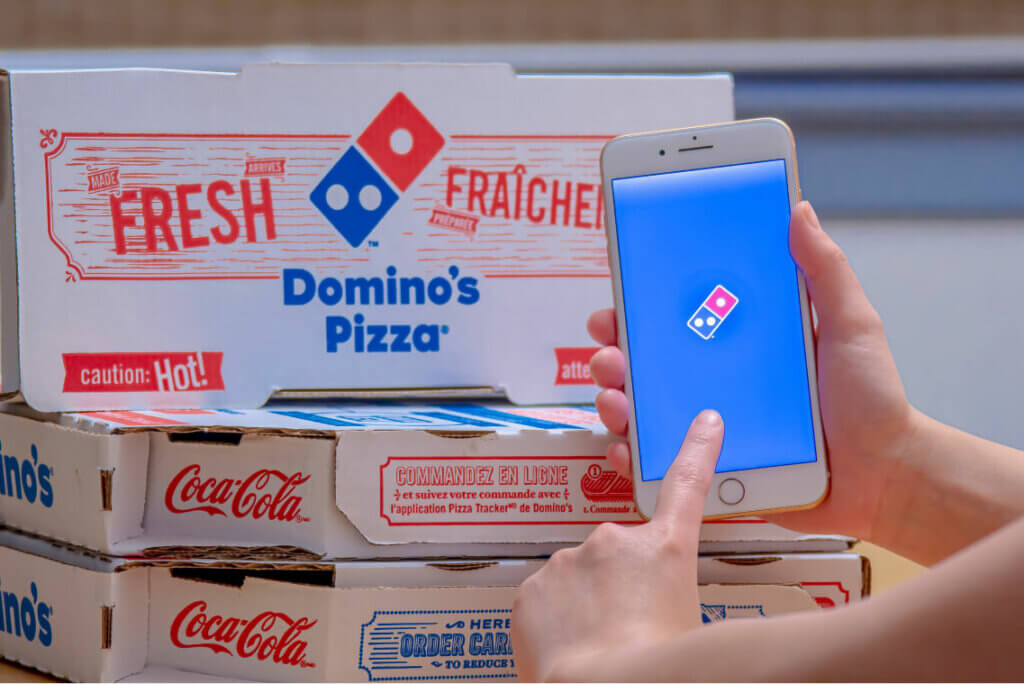Vivaldi’s founder, Erich Joachimsthaler, spoke at the 20th annual Brand Conclave hosted by the Confederation of Indian Industry. Erich is one of the few people that have been invited to speak for the second time, alongside David Aaker (who also presented at this event). Here’s are some of the key highlights from Erich’s speech.
We live in a world of exponential growth in connectivity. Regardless of time zone, whether you’re in New York or Calcutta, we all share the same 1440 minutes from midnight to midnight.
In this world, the way we build brands has fundamentally changed.
Brand building today requires more of us than curating and managing. It has expanded its remit and is now the main driver of value through new digital business models. You need to think about it in a more comprehensive way, and consider how you leverage that connectivity. Your focus has to be on more than just creating a better experience. You need to build a better business.
So, how do you evolve your brand messaging, programs, and your brand management in our hyper connected world?
Beyond a World of Walls
The old branding model was a world of walls. You thought of your brand within a particular category. You were an automotive company, an electricity company, an insurance company, a banking company.
In the world of walls, brand was basically one function along a chain of value creation, from designing, making, selling, and then ultimately proposing it to the consumer. It was driven by competing against others to win. How do I create a perception that we are better, more relevant, or more distinctive than anybody else? How do I create more shareholder value than the competition?
When you think about branding in the world of walls, you think about the relevant differentiation of essentially identical or very similar products. Brands competed to shape consumers’ perception on the basis of attributes.
Take Mercedes, BMW, and Audi for example. These companies are all OEMs – original equipment manufacturers – combining very similar parts, such as tyres or electronics. Branding created differentiation. Audi has technology that makes you feel smart. Mercedes expresses a sense of luxury, class, and exclusivity that makes you feel successful. BMW positions itself as the ultimate driving experience.
In a linear model, every function – R&D, design, manufacturing, quality, manufacturing, marketing, sales – added a little piece of value. And, because BMW did this so well, we were willing to pay a premium for a car because of its perceived value.
It used to be understood that the more advertising you bought, and the more product you distributed, the more you sold. In this model, the objective of a car company was to sell product to a dealer. Once the car was on the dealer’s lot, the car company’s role was over. In turn, the dealer was primarily interested in shifting inventory by whatever means necessary. This, in effect, undermined the brand story.

To a World of Webs
Today, those walls have disappeared. Instead, we live in a world of webs.
Relevant differentiation is only important if you can attain it. When consumer behaviour shifts and you’re no longer able to easily define your category, this becomes more difficult.
This doesn’t mean that the old way of brand building is completely irrelevant. We still need to manage brands. We still need to provide guidelines. We still need communications and advertising. However, we also need a change of emphasis.
Let’s return to our example of the car industry. Do consumers still buy cars? Or are they seeking to solve a problem of mobility? If we agree it is the latter, they can shop a number of categories to find mobility solutions. Zipcar, Uber, and Lyft all offer alternatives to car ownership that might be more affordable and more convenient.
In this world, what brands need to do is work to solve real problems.
Today, using a new brand building model, Tesla has created a company that is more valuable than Mercedes, Audi, and BMW combined. Tesla isn’t just another relevant differentiated product or car company. And the brand wasn’t built solely on advertising, a better experience, or better digital marketing. They have built the brand in a fundamentally new way.
In Tesla’s world, while attributes are still important to the brand, they play a minor role when compared to the power of interactions. They have leveraged connectivity and collaboration to solve wider industry and societal problems, and change consumer expectations. Every mile Tesla drivers cover contributes to their cloud based autopilot system and the safety of every vehicle in the network. Every charging point increases the viability of electric, and every domestic solar installation increases renewable capacity.
As a result, they are able to challenge BMW’s claims to the ultimate driving experience, Audi’s technological superiority, and the luxury of a Mercedes. Instead of being a brand that talks about sustainability as a piece of communications, it looks at solving the problems of sustainability as a business model. It isn’t that other car companies no longer produce great machines to drive, but that the perceived value has fundamentally changed.
It is this shift, exemplified by Tesla, that means better communications, experiences, or advertising alone will not cut it anymore. It’s why we need to talk about a better business model, one that leverages the connectivity and interactivity that exists globally in order to build brands.
Connectivity Demands Connection
In today’s connected world, you have to build your brand in direct relationship with the customer. The power of these new business models is in the direct, one on one relationships they create with the consumer.
Value is no longer created linearly. Instead, every additional thing you do, every additional connection in the network, multiplies and creates value exponentially. If you look at the ten most valuable companies today, eight of them have embraced digital business models.
There are three distinct ways to create value and each poses a very different brand challenge.
Digital Interfaces
In this model, a single company delivers on a single need and a single value proposition, through a direct relationship. Using data, technology, and analytics, they are able to optimise that relationship.
With a direct interface with a consumer, you’re no longer defining the brand and pushing it out. The brand becomes the interaction, and the consumer learns about the brand through their interaction with it.
One company doing an outstanding job of this is Domino’s. The original value proposition was a quick, convenient solution to your hunger. Your pizza was delivered in 30 minutes and if it wasn’t, you got it for free.
Domino’s has optimised that value proposition using a digital business model to build the brand, rather than through communications or more promotions. At Domino’s headquarters in Chicago, half of the 800 people employed work on nothing but the data, analytics, and technology that drives the business model.

From simplified ordering via the consumer’s voice assistant, to pre-payment and pre-tipping to ensure contactless delivery, they have optimised the delivery process and made ordering effortless. Domino’s consumers learn about new offers and functionality through their phone app, rather than through advertising.
This business model is paying off in driving value for the company and shareholders, with stock appreciating more than Google, Facebook, Apple, and Amazon.
It’s a similar story at Starbucks, a $25 billion dollar company where 70% of revenues come from automated mobile ordering. Interactions, such remote ordering enabled by geo-fenced notifications, prompt commuters to grab their morning cup of coffee on the way to the office from the subway station. Automatic charging creates a frictionless experience and the busy worker’s coffee is ready for collection as they arrive. In return, Starbucks knows not only their customer’s preferences, but also their daily behaviours and movements. That’s the power of learning that comes from a digital interaction model.
Platform Ecosystems
In a platform ecosystem, a single company builds the brand around a network connecting several companies.
Take, for example, Airbnb, a company that matches travellers with people who have accommodation. In order to deliver that value proposition, they connect users with ancillary services, such as insurance and cleaning services, through an ecosystem of suppliers. Airbnb captures data from each of those interactions to optimise their services. They are now a $100bn company, without having to own a chain of hotels like Marriott does.
Another example is Nike. Nike has taken a commodity product and created a belief system around athleticism and performance. Even though Nike has great flagship stores, their experience is about enabling people to solve their problems everyday. With an ecosystem of technologies that enable the everyday athlete, the brand is now bigger than just the shoes or apparel. It’s about how you can measure and manage your fitness on a daily basis, and representation for all athletes.
The company is worth around $45 billion, with growth of 19% in a downturn.The direct to consumer business is now worth around $15 billion, a growth of 32%. Those are the numbers you can realise, when you shift your thinking to how you can create a business model that connects with consumers directly.
Interaction Fields
An interaction field is a network that creates value around a core functionality. That value creation is exponential and oftentimes isn’t asset heavy or requiring significant investment. It’s about people in connection. The more people participate, the more value is created.
In an interaction field, our traditional understanding of brand architecture falls apart. Branding becomes a complex thing, with a family or ecosystem of sub-brands around a nucleus.
This is where Tesla sits. Part of Tesla’s value is created in the factory, but that’s not the value that makes Tesla such a runaway success. That value is created through interactions – the more drivers and charging points that are in the network, the more valuable it becomes.
Another example of an interaction field is the Chinese company, Ant Group. At its core Ant Group is the AliPay payment model. Based on their knowledge from this source interaction, or nucleus, AliPay have been able to develop algorithms, analytics, and technology that drives new product development. They have bolted on other networks and systems, including a loan capability, a wealth management capability, and insurance capability. It is a complex system, almost a platform of platforms, but all powered by the AliPay interaction.
Building the Brand
So, how has the model of branding changed in this world?
In the traditional model, you defined what the brand stands for. You created a purpose and a brand essence, and defined a set of core elements. You brought all of this together to create your positioning and a value proposition that appealed to your target audiences. Then you created communications that you believed would prompt consumers to act.
As we’ve seen, to build strong brands for our new digital ecosystem, you have to start from an understanding of the problems you are really solving for. From there you design and build the brand interactions you need to get consumers to engage with the brand and, ultimately, become so invested that they help to create shared value.
We can examine these four steps for building powerful brands by looking at one of the world’s best known, and loved, brands – LEGO. LEGO has a traditional brand strategy. In this brand system, all of the elements of the brand ladder up to deliver on their brand purpose – the Joy of Building and Pride of Creation.
However, new thinking is what has driven the brand forward and made it one of the most profitable companies in the world. Those little bricks create nearly $4 billion dollars in revenues a year, of which one third is net profit.
LEGO has tapped into their pride of creation promise and have created the opportunity for its users to share their creations from existing building sets online. The community upvotes the creations they would most like to see LEGO offer as a new set. If a user’s idea gets 10,000 votes, LEGO creates it and gives the originator 1% of the revenues in compensation. This encourages creators to promote their idea and, by extension, the brand. This authentic and organic social influence is what makes Lego the number engagement brand in the world.
1. Framing
Brands need to know the true consumer problem they are solving.
If you think about Lego from a traditional linear business model perspective, it is a toy company that fits into the market relative to Mattel, Hasbro, and other toy companies. While that framing might be still helpful, Lego has thought about their business from a very different perspective.
When they dug into the problem they were solving for, what they found is that the development of a child’s creativity and problem solving abilities isn’t just about play. It is about a particular type of play – free and fluid play that represents shared quality time with an adult.

2. Designing
If network effects are the powerful driving force behind brand building, and the more people who participate the more valuable the brand becomes, brands need to design the interactions, architecture, and governance that enables those effects to emerge.
Continuing with the Lego example, as more people are motivated to create and share their ideas it increases both the number of desirable Lego sets available to buy and the number of people engaged with the brand.
Innovation also benefits as it is no longer confined to Lego HQ. It can happen anywhere in the world as the brand empowers consumers to innovate on behalf of the company. By designing the interaction architecture and governance, you give consumers a stake in the brand.
3. Building
These are the activities that prompt consumers to interact with the brand.
Going back to Lego, they’re not trying to create another toy to hand to a child. The problem they are attempting to solve is one of how that child spends their time, and how they interact with the adults around them.
These are the motivations behind the activities the brand builds and promotes. What goals, activities, and interactions can they create that will engage both children and adults in the Joy of Building and the Pride of Creation?
4. Sharing
In this model, the creation of brand meaning is now shared with the consumer. This creates both shared value and brand gravity.
It is interactions, like the Lego Ideas platform, that have the power to transform the brand. It creates an experience that draws in other consumers and communities through word of mouth. The brand no longer needs to be communicated to consumers when they are active participants in it.
Final Thoughts
The world has changed so much since the first iteration of the internet built a network of information in the early ‘90s. Just as the emergence of the social web in 2009 changed how we build brands, so will the Metaverse as technology continues to converge and mature.
As the internet evolves, brands need to shift with it. We need new skills, new concepts, new frameworks, and new business models to succeed. However, it is the connectivity that challenges everything we used to know that also allows brands to be engaged in a process of continuous education. Interaction fields enable us to learn, unlearn, and relearn – about the market, consumers, competitors, and opportunities for collaboration – and help us solve for the problems we face as individuals and society.
For this to work to succeed, brand needs to be given a strong influence in building the business model. CMOs need to take their seat at the board table and, as a platform thinking company, we would love to be part of your conversation.
